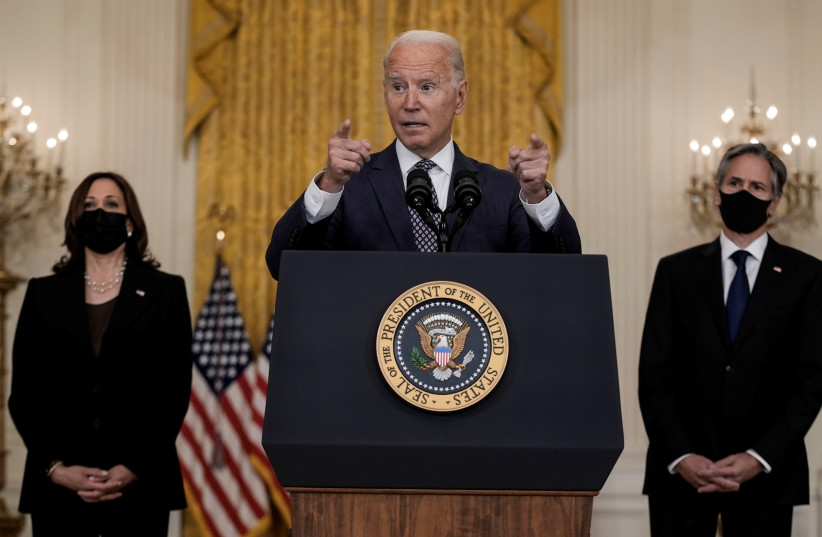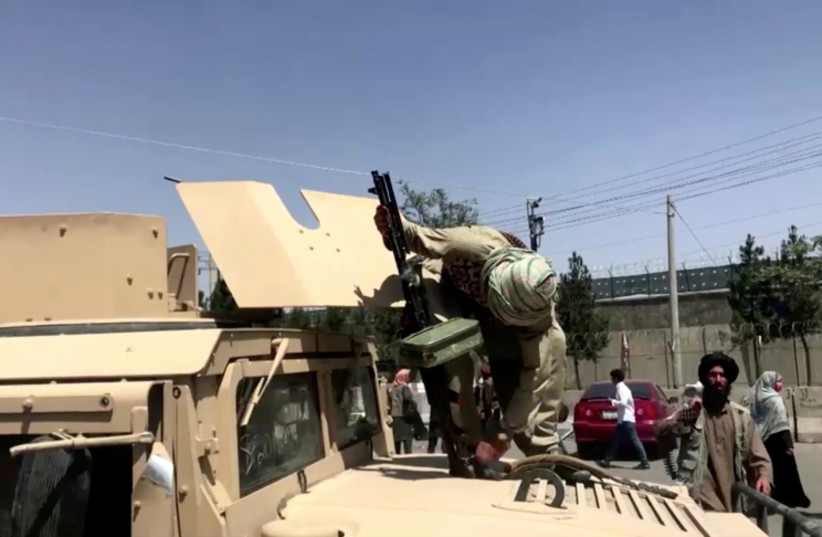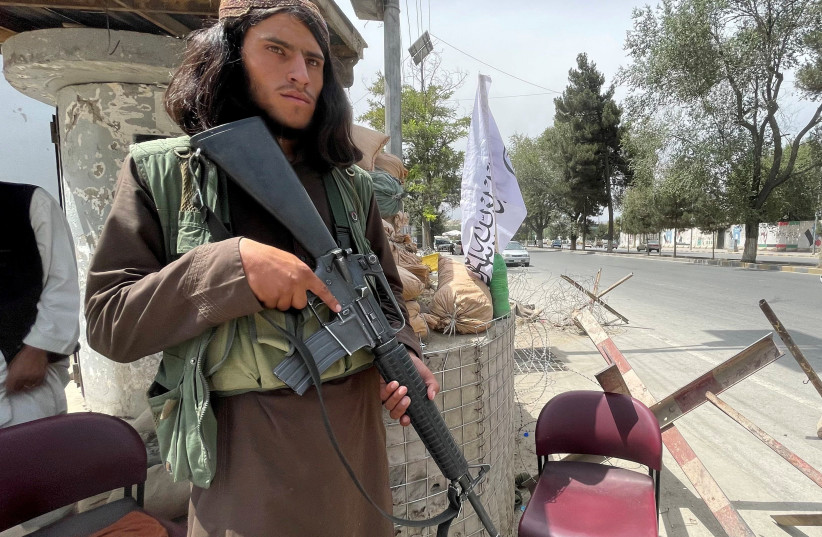Afghanistan: Questions arise from Kabul crisis, with troubling answers
if(window.location.pathname.indexOf(“656089”) != -1){document.getElementsByClassName(“divConnatix”)[0].style.display =”none”;}else if(window.location.pathname.indexOf(“/israel-news/”) != -1){ document.getElementsByClassName(“divConnatix”)[0].style.display =”none”; var script = document.createElement(‘script’); script.src = ‘https://player.anyclip.com/anyclip-widget/lre-widget/prod/v1/src/lre.js’; script.setAttribute(‘pubname’,’jpostcom’); script.setAttribute(‘widgetname’,’0011r00001lcD1i_12258′); document.getElementsByClassName(‘divAnyClip’)[0].appendChild(script);}
 Marines with the 24th Expeditionary Unit (MEU) guide an evacuee during an evacuation at Hamid Karzai International Airport, Kabul, Afghanistan, in this photo taken on August 18, 2021 (credit: US NAVY/CENTRAL COMMAND PUBLIC AFFAIRS/SGT. ISAIAH COMPBELL/HANDOUT VIA REUTERS)
Marines with the 24th Expeditionary Unit (MEU) guide an evacuee during an evacuation at Hamid Karzai International Airport, Kabul, Afghanistan, in this photo taken on August 18, 2021 (credit: US NAVY/CENTRAL COMMAND PUBLIC AFFAIRS/SGT. ISAIAH COMPBELL/HANDOUT VIA REUTERS) U.S. President Joe Biden delivers remarks on evacuation efforts and the ongoing situation in Afghanistan as Vice President Kamala Harris and Secretary of State Antony Blinken stand by in the East Room at the White House in Washington, US, August 20, 2021. (credit: REUTERS/KEN CEDENO)
U.S. President Joe Biden delivers remarks on evacuation efforts and the ongoing situation in Afghanistan as Vice President Kamala Harris and Secretary of State Antony Blinken stand by in the East Room at the White House in Washington, US, August 20, 2021. (credit: REUTERS/KEN CEDENO) A Taliban fighter on top of an armoured vehicle loads a gun outside the airport in Kabul, Afghanistan August 16, 2021, in this still image taken from a video. (credit: REUTERS TV/via REUTERS)
A Taliban fighter on top of an armoured vehicle loads a gun outside the airport in Kabul, Afghanistan August 16, 2021, in this still image taken from a video. (credit: REUTERS TV/via REUTERS) A member of Taliban forces keeps watch at a checkpost in Kabul, Afghanistan August 17, 2021. (credit: REUTERS/STRINGER)
A member of Taliban forces keeps watch at a checkpost in Kabul, Afghanistan August 17, 2021. (credit: REUTERS/STRINGER)




Comments are closed.